Alex Kolodkin PhD
Professor of Neuroscience
Professor of Neuroscience

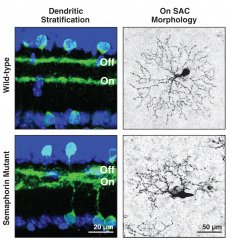 View larger
View larger
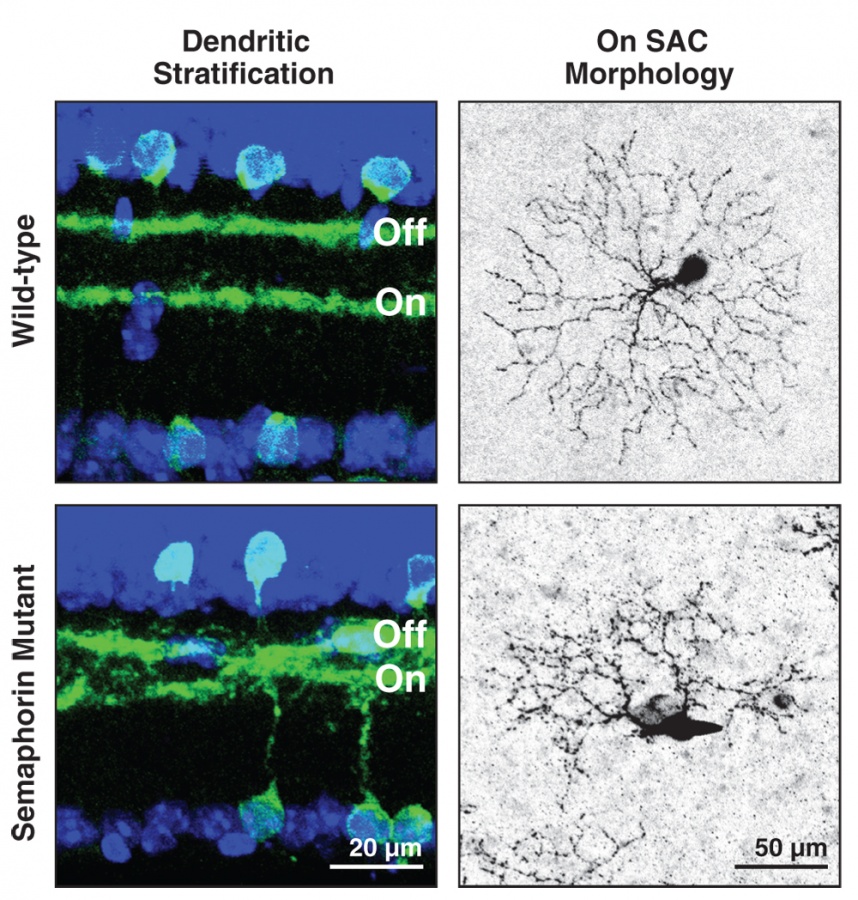
Starburst amacrine cells (SACs) in cross section and in the plane of the retina in wild type (top) and in mice harboring a mutation in the gene encoding the semaphorin 6A (Sema6A) transmembrane guidance cue. Sema6A is required for normal SAC lamination, dendritic morphology, and responses to directional objection motion.
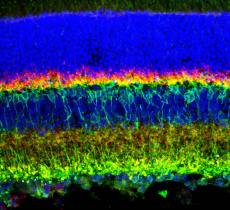 View larger
View larger
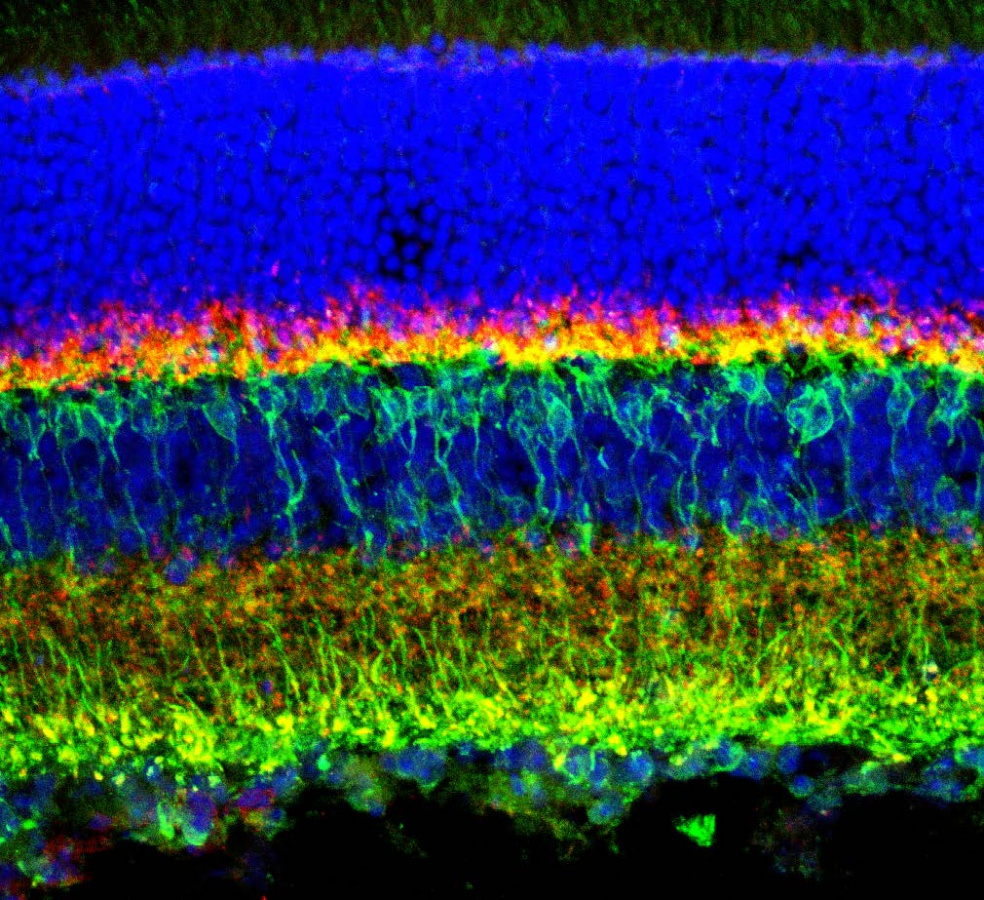
Cross section of the mouse retina stained with antibodies to illuminate the synapse-rich outer and inner plexiform layers along with a subset of bipolar cells.
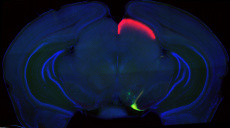 View larger
View larger
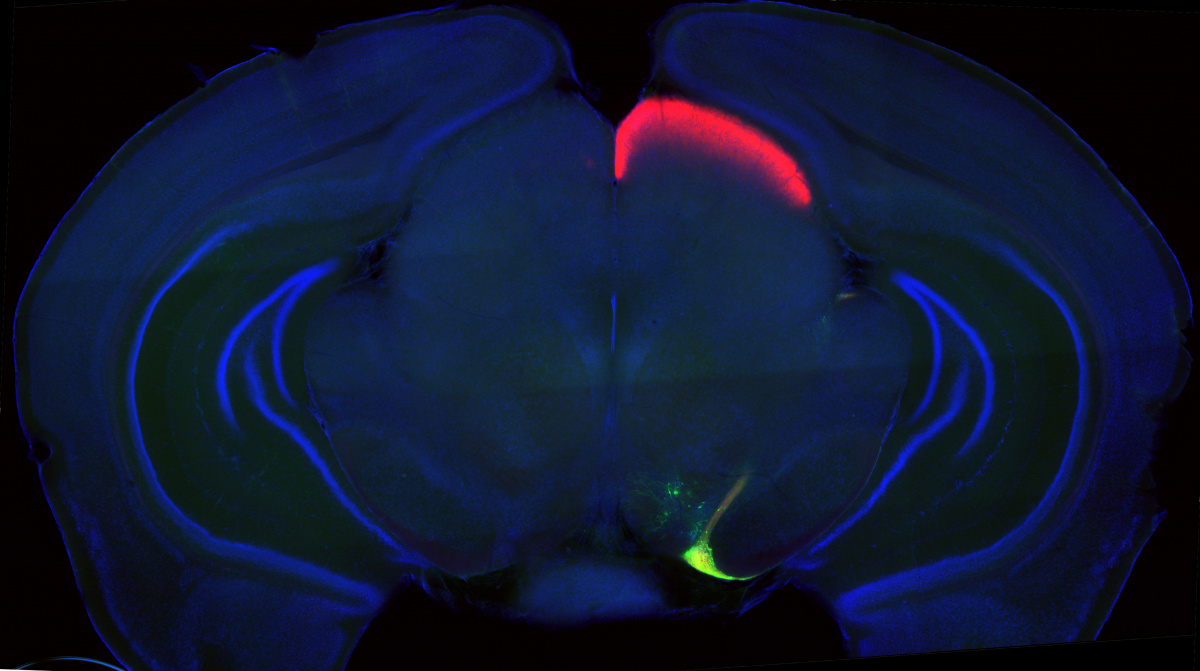
Section of a mouse brain infected with a virus to selectively label retinal ganglion cell central targets, including the medial terminal nucleus (green, bottom) and the superior colliculus (red, top).
Research in my laboratory is focused on understanding how neuronal connectivity is established during development. Our work investigates the function of extrinsic guidance cues and their receptors on axonal guidance, dendritic morphology, and synapse formation and function. For several years we have investigated how neural circuits are formed and maintained through the action of guidance cues that include semaphorin proteins, their classical plexin and neuropilin receptors, and also novel receptors. We employ a cross phylogenetic approach, using both invertebrate and vertebrate model systems, to understand how guidance cues regulate neuronal pathfinding, morphology, and synaptogenesis. We also seek to understand how these signals are transduced to cytosolic effectors. Though broad in scope, our interrogation of the roles played by semaphorin guidance cues provides insight into the regulation of neural circuit assembly and function. As a result of the ongoing projects in my laboratory, I and my colleagues have extensive experience in both fly and mouse genetic manipulations and neuroanatomical analysis. Our current work includes a relatively new interest in understanding the origins of laminar organization in the CNS. This direction has resulted in our identification of guidance cues that regulate both specific and general aspects of neurite stratification in the mouse retina, in addition to the targeting of retinal ganglion cell axons to retinorecipient midbrain targets. These observations have prompted us to look for cellular and molecular mechanisms that regulate laminar organization in the mouse neocortex.